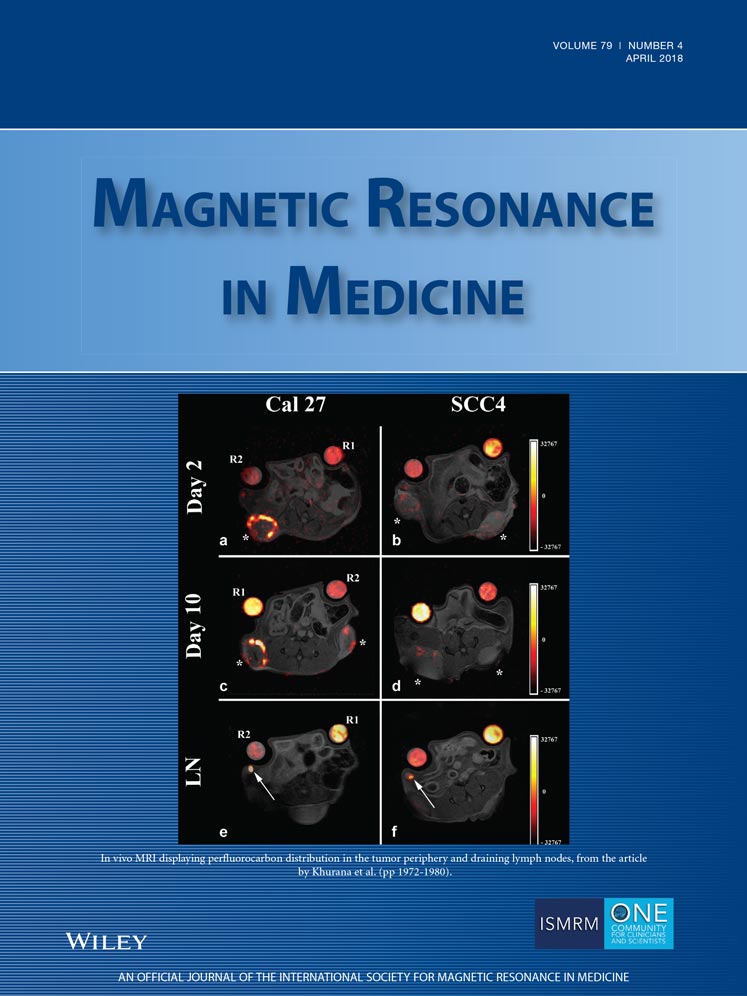Fully phase-encoded MRI near metallic implants using ultrashort echo times and broadband excitation
Abstract
Purpose
To develop a fully phase-encoded MRI method for distortion-free imaging near metallic implants, in clinically feasible acquisition times.
Theory and Methods
An accelerated 3D fully phase-encoded acquisition with broadband excitation and ultrashort echo times is presented, which uses a broadband radiofrequency pulse to excite the entire off-resonance induced by the metallic implant. Furthermore, fully phase-encoded imaging is used to prevent distortions caused by frequency encoding, and to obtain ultrashort echo times for rapidly decaying signal.
Results
Phantom and in vivo acquisitions were used to describe the relationship among excitation bandwidth, signal loss near metallic implants, and T1 weighting. Shorter radiofrequency pulses captured signal closer to the implant by improving spectral coverage and allowing shorter echo times, whereas longer pulses improved T1 weighting through larger maximum attainable flip angles. Comparisons of fully phase-encoded acquisition with broadband excitation and ultrashort echo times to T1-weighted multi-acquisition with variable resonance image combination selective were performed in phantoms and subjects with metallic knee and hip prostheses. These acquisitions had similar contrast and acquisition efficiency.
Conclusions
Accelerated fully phase-encoded acquisitions with ultrashort echo times and broadband excitation can generate distortion free images near metallic implants in clinically feasible acquisition times. Magn Reson Med 79:2156–2163, 2018. © 2017 International Society for Magnetic Resonance in Medicine.



 decay. Phantom results of a 3D printed plastic replica (left) and matching metallic implant of a total hip replacement are shown for UTE-FPE, MAVRIC-SL, and UTE-FE acquisitions at both 1.5 and 3 T.
decay. Phantom results of a 3D printed plastic replica (left) and matching metallic implant of a total hip replacement are shown for UTE-FPE, MAVRIC-SL, and UTE-FE acquisitions at both 1.5 and 3 T.
